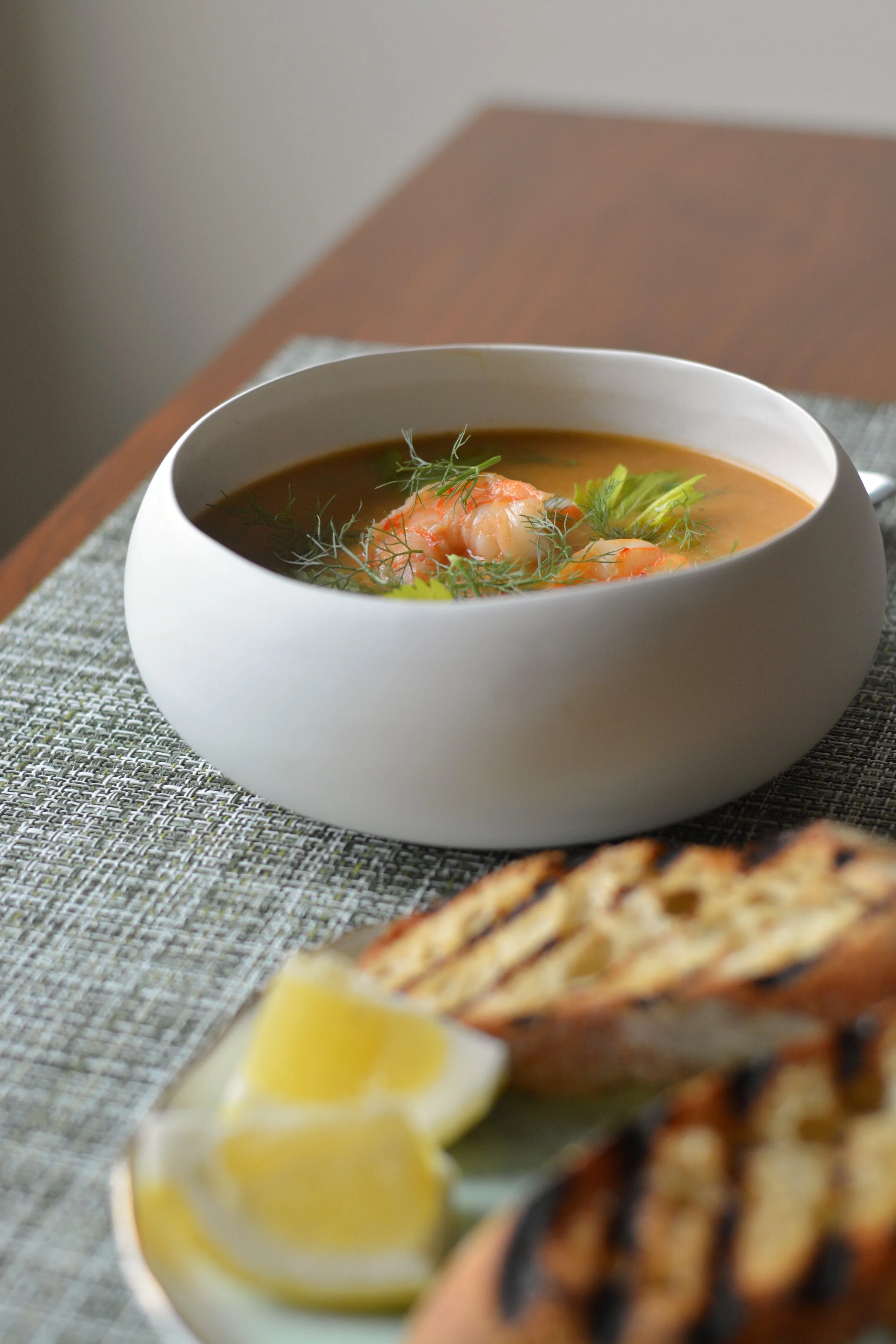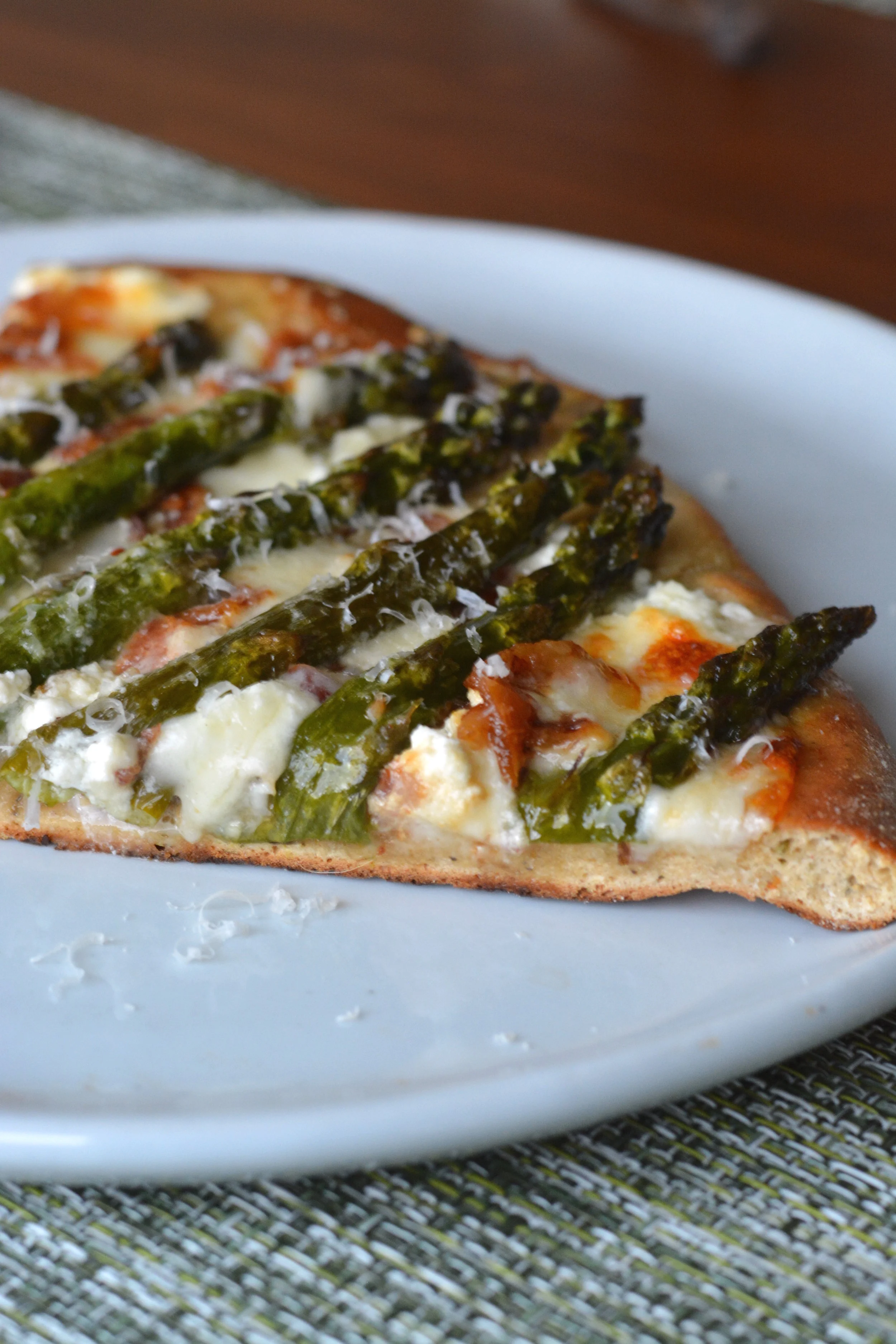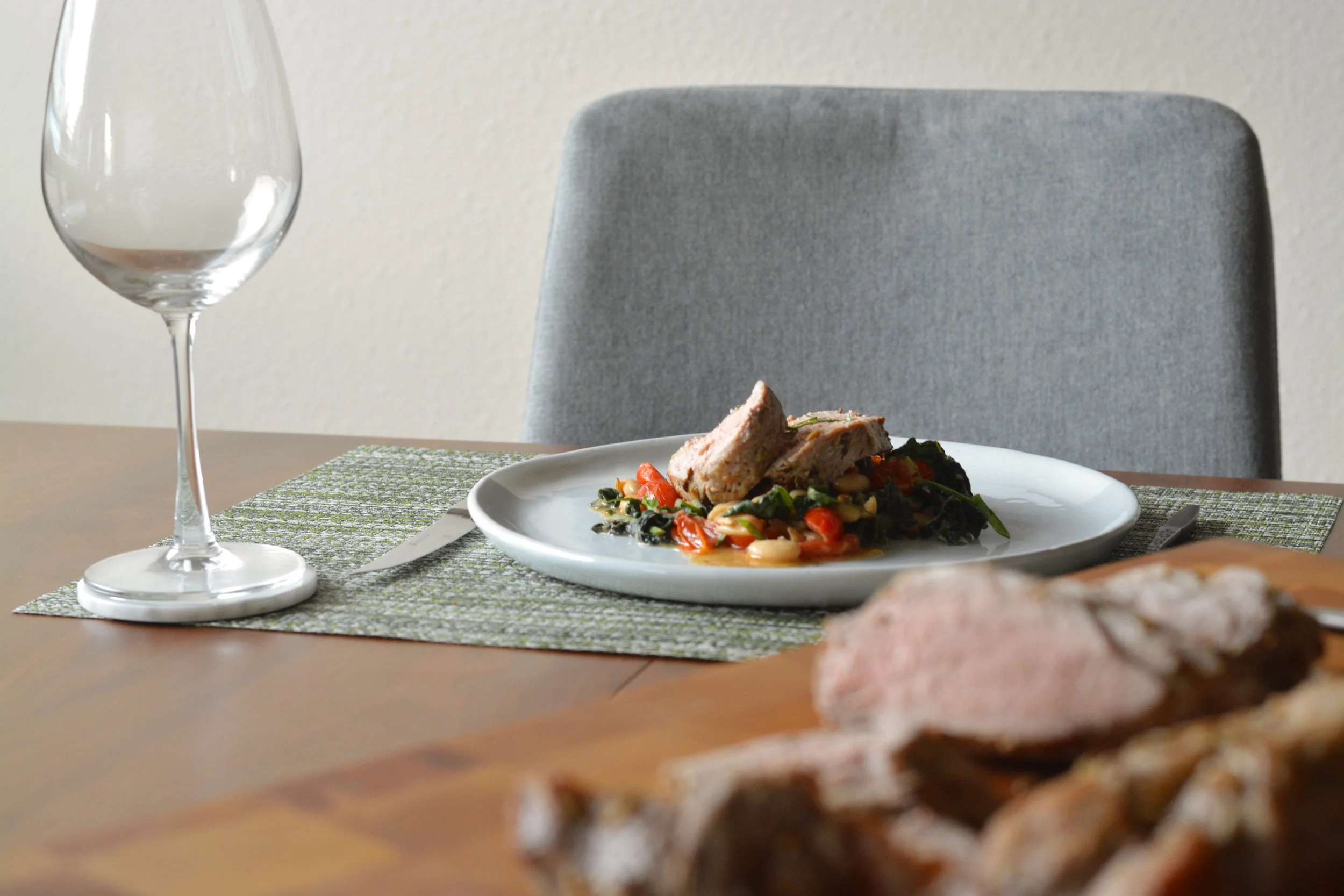“’[Cooking] is like typing,’ she said, ‘you have to know it in the fingers so that you do not think about it with the head…’” - Ruth Reichl
When I first started daydreaming about my Dutch oven, I did not waste time thinking about what meals I would create in it—I knew there would be an endless array of dishes to come from that glorious orange pot long before I ever had one. Instead, I daydreamed about the moment when I would be able to pass it along to a grandchild, so beautifully worn and chipped, alongside the memories of every pot of risotto, every stew and simmered soup. It is a weighty daydream, no doubt, and its future may never come true. And yet, the possibility of such an outcome is the main reason I wanted one. Who doesn’t want to leave a legacy, no matter how small?
In many ways, these are the nostalgic thoughts which drive me in the kitchen. I don’t come from a family of strong heritage—yes, we have our traditions. My brother and I used to talk about who would get Grandma’s small cast iron skillet that she used to make us French toast in. It wasn’t the pan that really mattered, but the memory we both have of her teaching us how to make our favorite breakfast. And so, I yearn to make my own memories long before I have a family of my own and I fill that need by inviting friends over for small, intimate dinners.
It goes without saying that I take these gatherings seriously—but there is something intensely comforting in making a tranquil space from which to cook whatever dish feels good at the moment and for those I hold dear. While I can only hope my guests feel the same way, I walk away from each of these dinners feeling full of heart in a way I cannot adequately capture. They are the dishes and the experiences that I want to know in my fingertips.
Tuesday: Cristina and I had been planning a dinner gathering for almost a year and we finally got our act together. One bottle of wine too many, wild mushroom risotto, and asparagus with slow roasted grape tomatoes and balsamic glaze. Conversation turned toward goals and concerns about life “stages”, as they always seem to do after the second glass of Sauvignon Blanc. We stayed up too late and I ended the night by taking a chance and using my building’s quasi-broken elevator marked, “Use At Your Own Risk”.
Thursday: Jamie and I seem to follow the same path we always have in our adult lives—waiting to get together until there is almost too much to say, having rekindled our friendship when we found ourselves in the same city six years after graduation. A salad of snap peas, radishes, bok choy and pistachios doused in sesame and miso dressing. Grilled chicken sliced on top and crackers with goat brie on the side. We prefer heartening meals and comforting faces so we can remember where we’ve come from and see where we are going—markers of progress that only we can seem to reveal to one another.
Sunday: Jordan, Isabel, AM, and I found ourselves in need of some warmth. Jordan and I had both secretly wished the sun would stay away all day so the rain could do its magical thing (it didn’t)—and so we were in need of a reminder of winter’s coziness. I threw together a French onion soup—deeply caramelized onions, a bit of thyme, Worcestershire and garlic to ensure complexity, all topped with buttery little bread rounds and a mound of nutty Swiss gruyere. If this is what winter looks like, I think we will all have another bowl. And here I am, starting a new week where I ended the old, with a stomach as full as my heart.
French Onion Soup
Adapted from Deb Perelman at Smitten Kitchen
Serves Four
As with any good French onion soup, this recipe takes time. Caramelizing the onions are a must—as they brown, something called the Maillard reaction occurs and this helps you develop that complex and deeply savory flavor. Ingredients like Worcestershire sauce help, but nothing can or ought to replace the onions here. And, just to be certain I said it, go heavy on the cheese—everyone loves a cheesy French onion experience.
1 French baguette, cut into ½ inch rounds
4 T. unsalted butter
2 lb. yellow onion, sliced thinly
3 T. unsalted butter
1 T. olive oil
1 t. salt
½ t. sugar
1 garlic clove, minced
1 t. chopped thyme
3 T. flour
1 t. Worcestershire sauce
½ c. dry white wine
8 cups beef stock
Salt and pepper to taste
8 oz. grated Gruyere
Preheat oven to 375 degrees Fahrenheit. Butter both sides of each bread round and place on a cookie sheet. Bake for 15-20 minutes, flipping halfway through, until thoroughly toasted and golden brown.
Melt butter and oil in a heavy bottomed Dutch oven over low heat. Add your onions, toss to coat in butter, and cover. Leave the onions to sweat for 15 minutes.
Uncover pot, turn heat up to medium-low and add salt and sugar. Cook onions for 40-45 minutes, stirring frequently and making certain to scrape up all of the brown bits on the bottom of the pan with each stir. You’ll know the onions are ready when they’ve reached a deep golden brown.
Add garlic and thyme and cook for 30 seconds or until fragrant. Stir in flour and cook for about three minutes or until flour is lightly toasted. Pour in wine and Worcestershire sauce, making certain to scrape up any flour that has stuck to the bottom of your pan. Slowly pour in stock while continuously stirring to ensure flour is evenly incorporated.
Bring soup to simmer and cover, letting sit for 30-40 minutes. Portion out into six oven proof dishes and place bread rounds on top. Mound gruyere on top of bread rounds and place in oven. Bake for 15 minutes until bubbling on the sides. Turn broiler to high and broil until cheese begins to brown.
Let cool slightly and serve.







